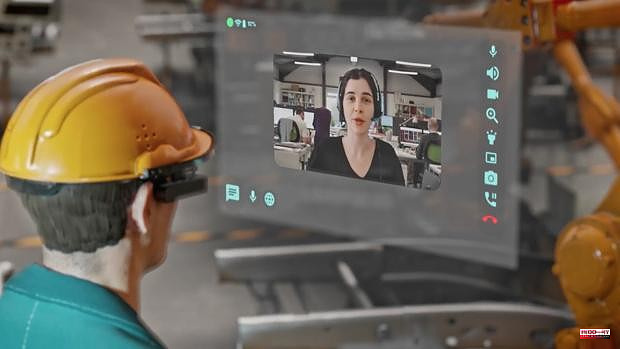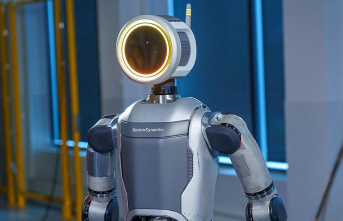Occupational accidents are a problem that affects all sectors, but it hits construction particularly hard. According to the latest data available from the Ministry of Employment, the incidence rate in 2020, a year marked by the impact of Covid, was 2,455.1 work accidents with sick leave for every 100,000 workers. And the activity sector with the highest incidence rate was construction, which, with 5,804.1, exceeded the average of the sectoral rates by more than double. As highlighted by Fernando Sanz, head of the Industrial Safety Department of the National Center for New Technologies in a recent webinar, "there were 118 fatal accidents in construction during 2021, and between 2017 and 2019, the construction sector recorded 286 deaths on site, 63% due to falls from height.
Reducing this impact is a priority that companies in the sector are working on. And to meet this complex objective, innovation and technology become natural and decisive allies. As highlighted by the Fundación Laboral de la Construcción, "the characteristics, nature and particular conditions of the sector make it especially complex to achieve all the aspects to be taken into account in terms of occupational risk prevention (PRL)". A complexity that is accentuated, beyond the real estate field, in the field of large infrastructures.
From the point of view of prevention, Cristina Calderón, director of the Prevention, Quality and Environment department of the Arpada construction company, highlights recent initiatives in her company such as the synergy between the BIM (Building Information Modeling) and Prevention departments: «We began to work together to analyze the feasibility of using a Common Data Environment (ECD-CDE) and the usefulness of managing projects in 3D, to manage the prevention of occupational risks with different digital tools, thus improving communication, traceability incidents and promoting collaborative work". This planning allows closer contact between architects, project managers, Health and Safety coordinators, manufacturers...
Since 2016, the Arpada Chair has imparted knowledge at the Etsem (Higher Technical School of Building) of the Polytechnic University of Madrid. Antonio Ros, technical architect and doctor from the UPM, is a full professor and coordinator of the discipline of Prevention and Safety II in the Degree and Double Degree of Building and ADE, and begins his statements by highlighting how the Law on Prevention of Occupational Risks collects as one of the principles of preventive action "take into account the evolution of technology". And he points out that "the evolution of new technologies, the advancement of communications and the innovation and research projects carried out from the building sector, both companies and public entities and the university itself, achieve an improvement in health and safety in this sector... which maintains high accident rates».
The appearance of applications and platforms related to documentation and management in building works (with cases such as electronic books, portals for documentation, etc.) have improved the level of prevention, an environment in which Ros highlights hopeful contributions «such as, for example, that of the Internet of Things technology that interconnects devices and objects through a network to speed up data transfer, supported by NB (NarrowBand) communication, which is faster and more energy efficient».
In the case of Sacyr, they have projects such as SIMULADrón, a training system for piloting drones in a virtual and controlled environment. "Through this training system (highlights from the company), we managed to improve skills in complex operations such as reviewing wetsuits on bridge piers or reviewing the state of slopes that allow these tasks to be carried out in a real environment, practically without affecting the road and without putting the workers at risk.”
As for the Soter Project, the use of the IOT serves to monitor workers: thanks to geolocation, it is possible to know if, for example, they have suffered a fall or heat stroke. And there are already sensors that allow brain waves to be analyzed in search of signs of fatigue, a potential prelude to accidents. From there, advances in big data and artificial intelligence make it possible to have an arsenal of information to help decisively in prevention, and which is integrated into company programs such as its own open innovation program, Sacyr iChallenges.
Virtual and augmented reality also join this battery of actions, in addition to initiatives such as those highlighted by the Fundación Laboral de la Construcción: «Dynamic tools for training ('gamification'/'serious games'), in an environment of ' Construction 4.0', introduce a decisive advance. And we highlight the BIM methodology, which allows the comprehensive management of projects, through virtual models and ‘intelligent’ data traceability.” The institution has launched, in collaboration with Cype Ingenieros, the free application 'PRL en BIM'.
From the foundation they also point out the importance of their VRoad project, from the Erasmus program, which has created a virtual reality application for learning about health and safety jobs in road maintenance and operation (guardrail repair, road spill action, etc.). And within this same framework, the SetAr project seeks to reduce the accident rate during excavation work with a training methodology based on the use of augmented reality.








